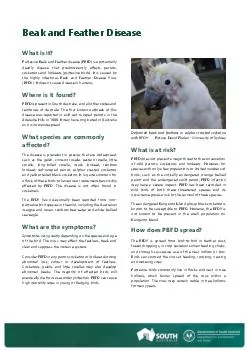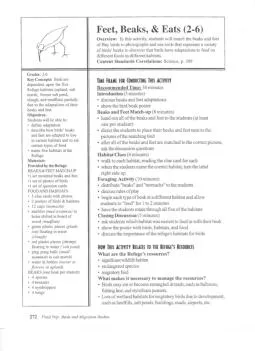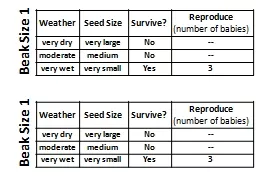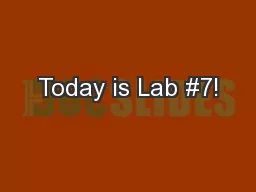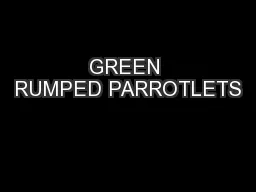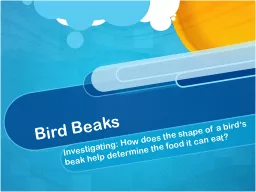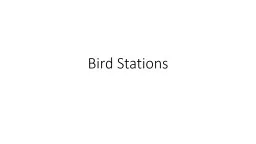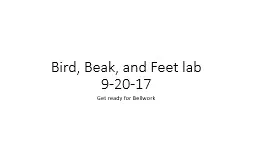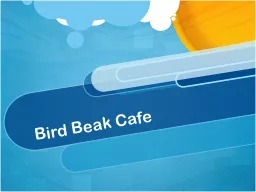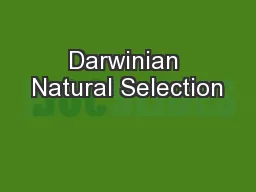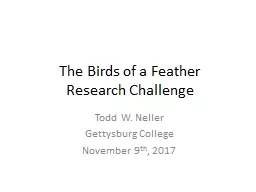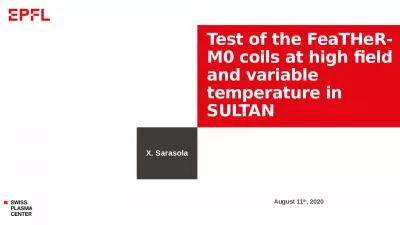PDF-Beak and Feather DiseaseWHAT IS IT?Psittacine Beak and Feather Disease
Author : marina-yarberry | Published Date : 2016-03-02
Do not release captive parrots cockatoos and lorikeets into the wild unless tested for PBFD and the test results show that the bird does notcarry the BFD virusGood
Presentation Embed Code
Download Presentation
Download Presentation The PPT/PDF document "Beak and Feather DiseaseWHAT IS IT?Psitt..." is the property of its rightful owner. Permission is granted to download and print the materials on this website for personal, non-commercial use only, and to display it on your personal computer provided you do not modify the materials and that you retain all copyright notices contained in the materials. By downloading content from our website, you accept the terms of this agreement.
Beak and Feather DiseaseWHAT IS IT?Psittacine Beak and Feather Disease: Transcript
Download Rules Of Document
"Beak and Feather DiseaseWHAT IS IT?Psittacine Beak and Feather Disease"The content belongs to its owner. You may download and print it for personal use, without modification, and keep all copyright notices. By downloading, you agree to these terms.
Related Documents

